Early Blackpool
Read about Blackpool’s History >>> here <<<
Most of the following information can be found at various sources on the internet, including these excellent links, 1 and 2.
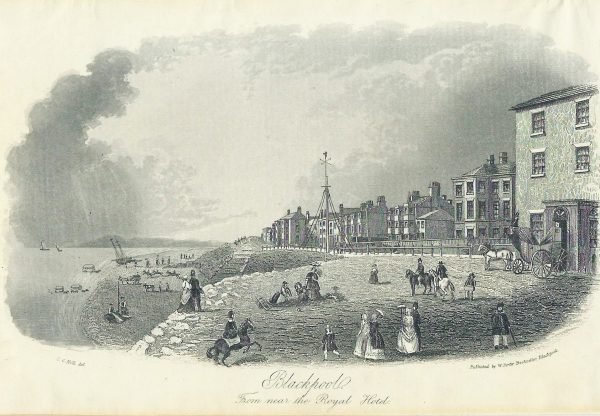
Our earliest record of Blackpool goes back to 1416, when Le Pull (the Pool) was granted to the use of William Boteller, in the time of Henry III
Christenings –
1592, March. John filius John Broune de Poole foote.
1602, July. Robtus sonne of Thomas Bamber de Poole.
1634, Sept. William sonne of Ric, Warbreck of Blackpoole
Burials –
1594, March. Isabel Hodgson de Poolefoote
1640, Sept. John the sonne of Rob Jolife of the Blackpoole
Bishop Pococke who visited the area between 1750-54, left on record that, ‘at Black Pool near the sea are accommodations for people who come to bathe’.
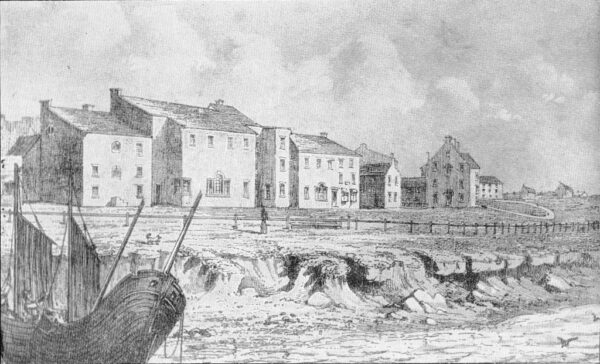
Blackpool 1750 – Looking South
From a painting of Blackpool as it supposedly was in 1750, based on a small engraving published by William Thornber about 1860. The buildings to the left are associated with ‘Mr. Forshaw’s Bathing Place’, which later became the Clifton Hotel. The building set forward right of centre is the Lane Ends Hotel at the foot of Church Street
Census records show the following populations :-
1831 – 943, 1841 – 2168, 1851 – 2503, 1861 – 3908, 1871 – 7092, 1881 – 12717, 1891 – 21970, 1901 – 47346, 1911 – 58376
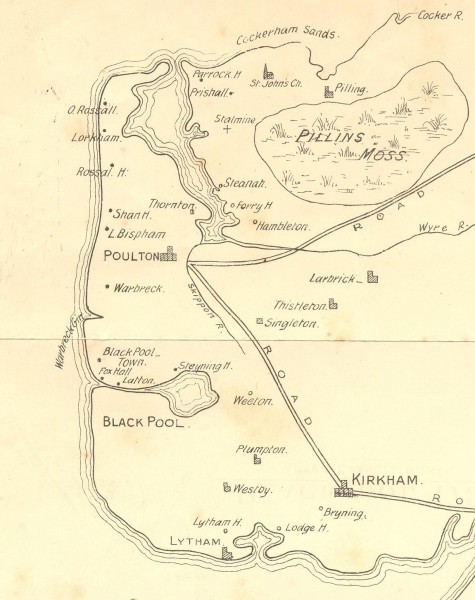
Map of area in 1751
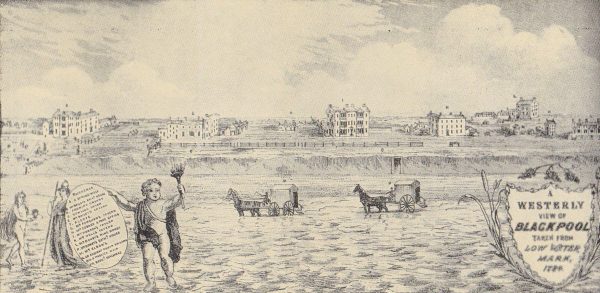
Blackpool 1784 – Looking West
A painting based on a print by Thornber depicting Blackpool in 1784. On the far left is Bailey’s Tavern, with the Foxhall on the far right
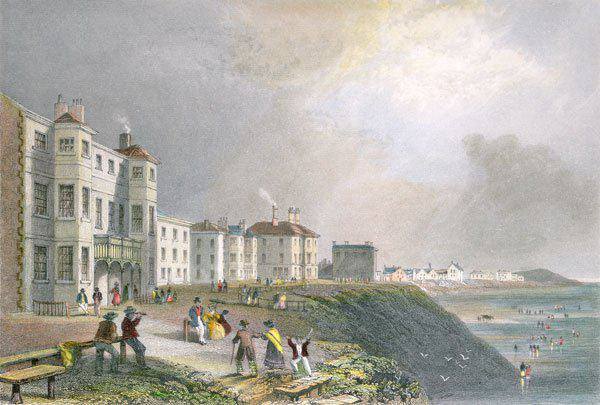
Blackpool in 1836 – Looking South
This early engraving of Blackpool in about 1840 shows the Lane Ends Hotel, now part of old Lewis’s site. Beyond, with its tall chimneys, is Sir Benjamin Heywood’s new marine residence, West Hey (Tower site). Further on is the Royal Hotel and Lower Blackpool in the distance
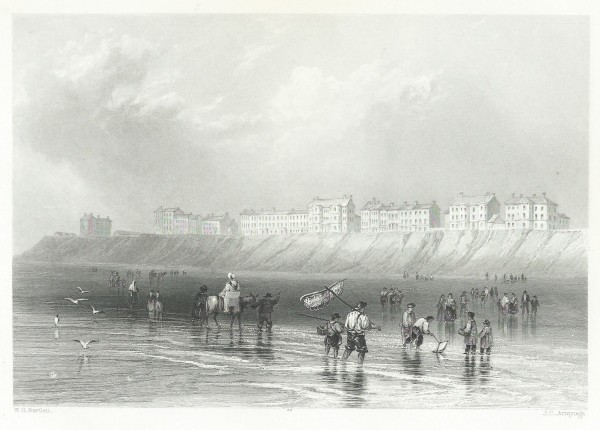
Blackpool in 1836 – Looking North
The view from the beach from Bailey’s Hotel to West Hey with Lane Ends Hotel prominent in the centre
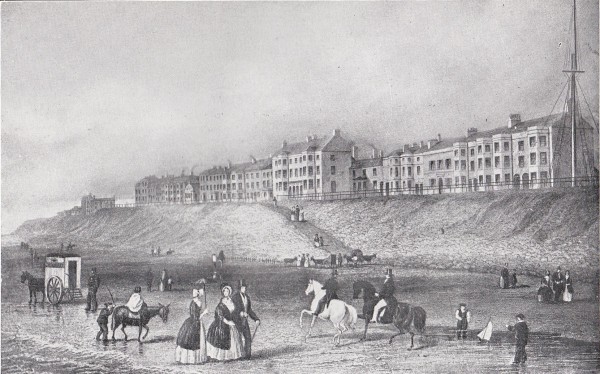
Blackpool in 1840
A more accurate representation of Central Beach in the 1840’s showing the path down to the front of the Lane Ends Hotel. The latter’s small bath house adjoins it to the south and from it extends Hygiene Terrace (Lewis’s old site) to Flagstaff at Victoria Street.
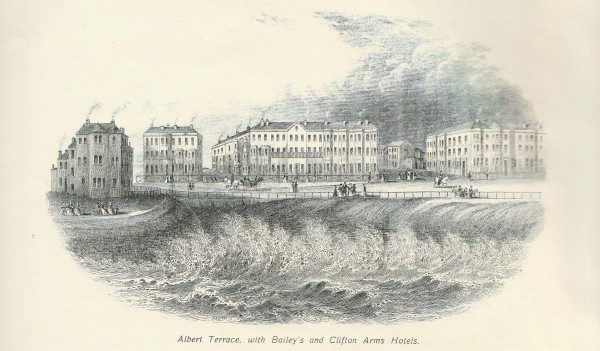
Albert Terrace with Bailey’s and Clifton Arms Hotels
North Beach by Lizar showing Rossall’s Hotel (formerly Bailey’s and Dickson’s), Queen Street, Albert Terrace and the Clifton Arms on the right. Talbot Square has been opened out by the demolition of Coburg House
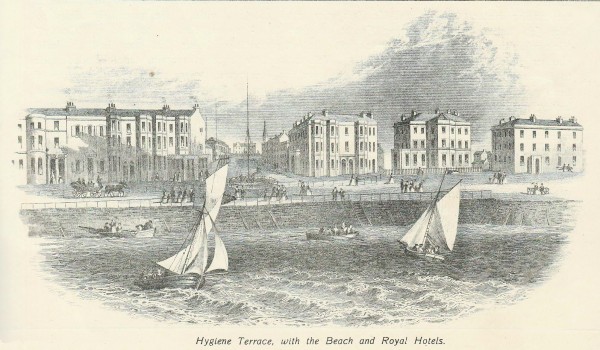
Hygiene Terrace with Beach and Royal Hotels in the early 1850’s
One of four engravings by Lizar from drawings made in Autumn 1852 showing Central Beach from Hygiene Terrace to the Royal Hotel. The Congretional Church of 1849 and the house Bank Hey (Winter Gardens site) can be seen up Victoria Street. To the right of the flagstaff are the Beach Hotel and West Hey.
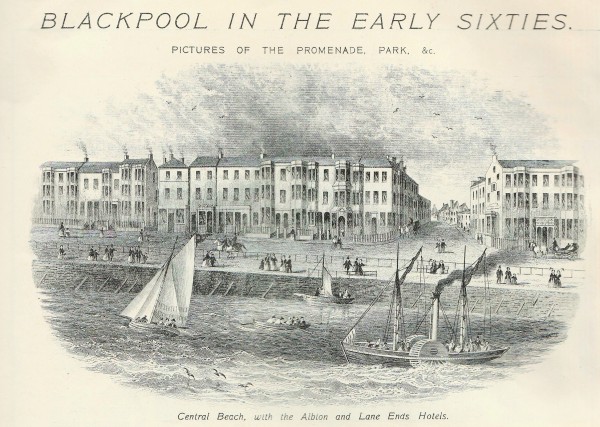
Central Beach with the Albion and Lane Ends Hotels in the early 1860’s
A later view looking up Church Street with the Albion Hotel and the Lane Ends Hotel on opposite corners. Further up the street can be seen the photographic studio “The Temple of the Arts”. The building survives today with a replica of “The Three Graces” in relief on it. ie Temple Street.
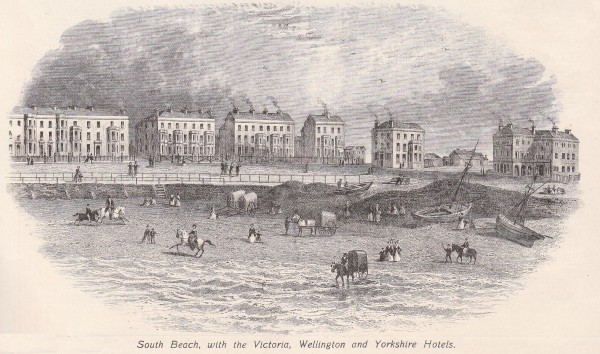
South Beach showing Victoria, Wellington and Yorkshire Hotels in the early 1860’s
South Beach in a print by Lizar showing part of what is now the Golden Mile. Standing alone, a little to the right, is Robert Bickerstaffe’s Wellington Hotel by Chapel Street built in 1851. On the far right is the York Hotel.
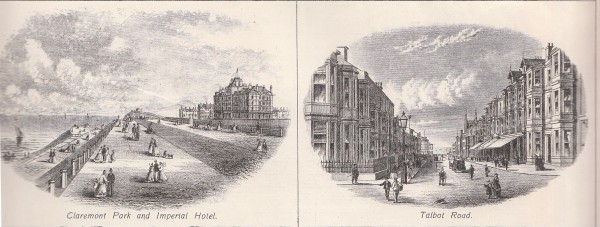
Claremont Park & Imperial Hotel in the early 1860’s
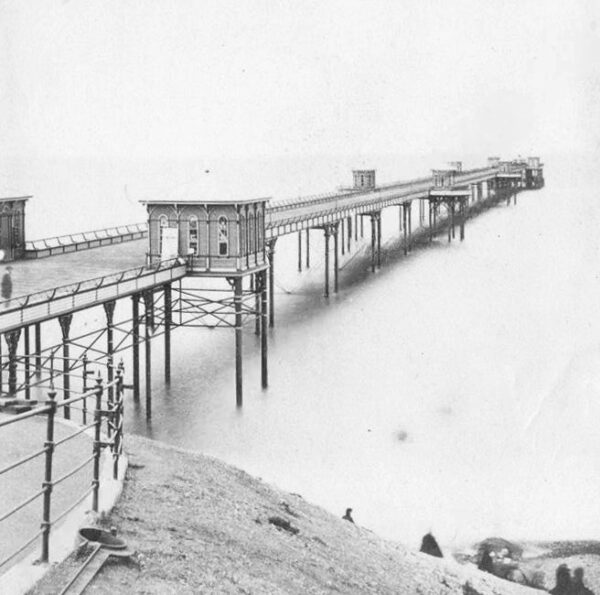
North Pier from a Carte de visite by H. Petschler, The Manchester Photographic Company
In 1870-72, John Marius Wilson’s Imperial Gazetteer of England and Wales described Blackpool like this:
BLACKPOOL, a town and a par. chapelry in Bispham parish, Lancashire. The town is in Layton-with Warbreck township, and stands on the coast, at the ten mini of two branch railways, from Poulton st. and from Lytham, 18 miles WNW of Preston. It was not long ago an obscure place, but is now a fashionable watering resort. It stands on a ridge of low clay cliffs; overlook a fine bathing beach, provided with machines; command charming views, along the coast and across the sea, t Wales and the Lake district; and consists of well-built houses, ranged in an irregular terrace about two miles long It has a post office‡ under Preston, a telegraph, a police station, a number of hotels, a newsroom, a library, an athenæum, a theatre, three churches, and five dissenting chapels.

Hemingway’s Manchester Hotel. A carte de visite by Leaver
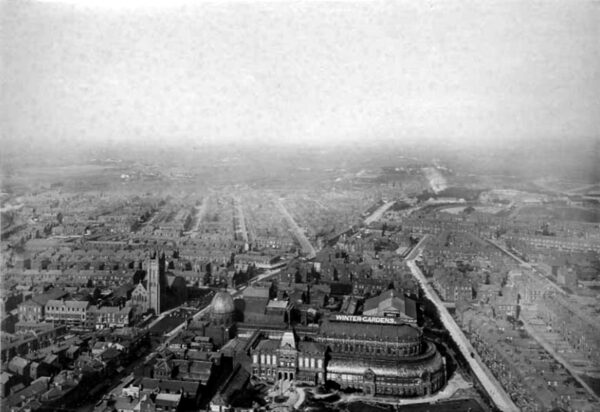
An early image taken from the Tower
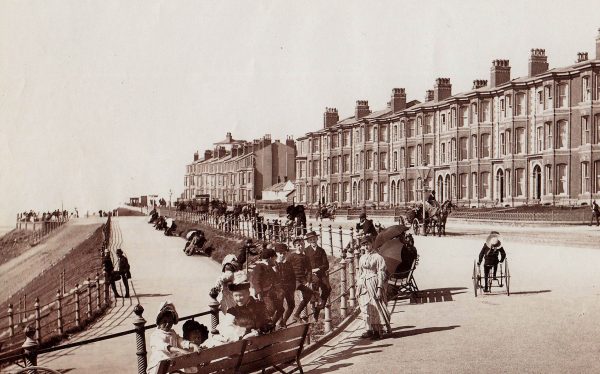
Taken from the Metropole Hotel, this picture shows Regent Terrace and the small cottage at Cocker Square known as Fumblers Hill. c.1897
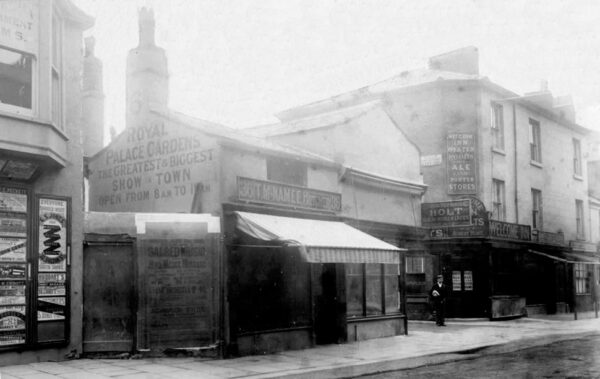
Bank Hey Street – Sefton Street – 1890’s
McNamee’s Butchers at Number 36
The Welcome Inn on the corner of Sefton Street and Bank Hey Street
Note : The Royal Palace Gardens being advertised on the side of the butchers
The location is now occupied by Boots the Chemist
The Town Hall in Market Street was pulled down and work began on the new one in Talbot Square in 1895. Many small shops were demolished, including J.S. Todd’s silk merchants and J Wright’s confectioners, as seen in this view
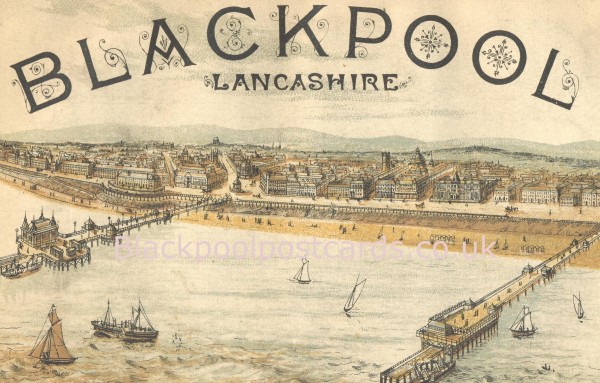
An artist view of Blackpool during the 1880’s
Shows the promenade between North and South Pier (now Central). The Winter Gardens can be seen which opened in 1876, but there is still no Tower building
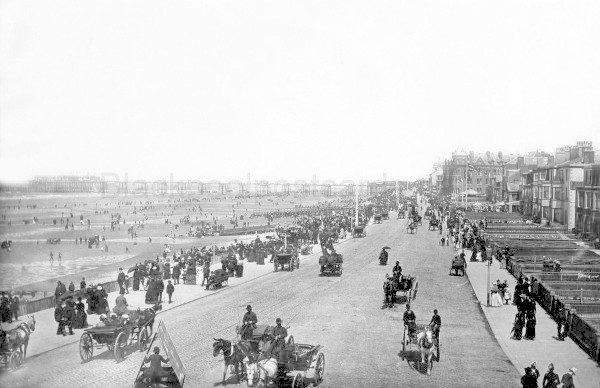
Central Promenade 1890. The Tower is not built yet
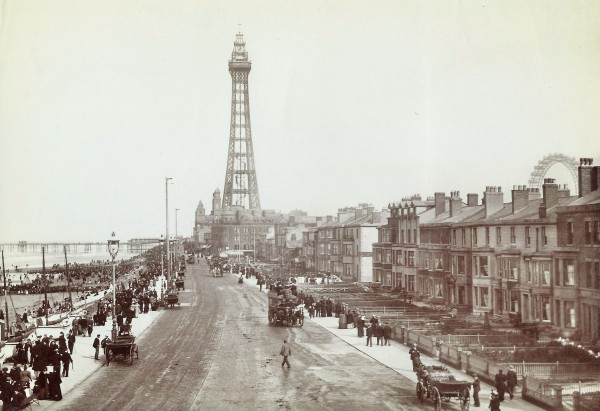
Central Promenade showing front gardens
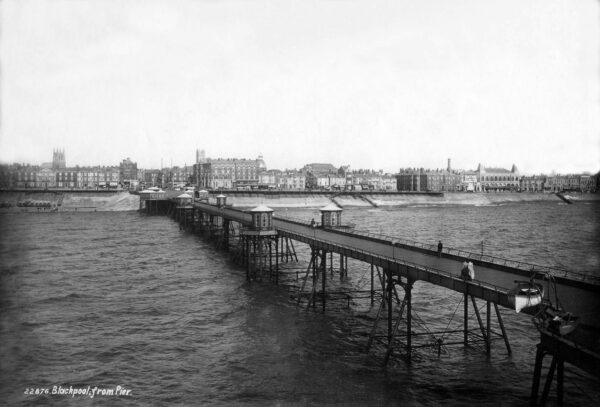
An early view of Blackpool promenade from the Pier (North). No Tower or Big Wheel. The Town Hall is yet to be built
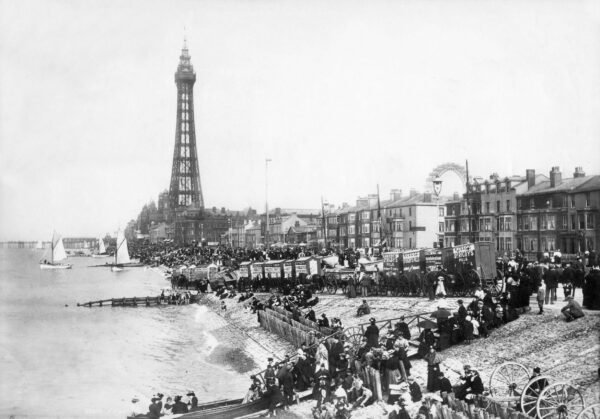
Central Beach showing a busy scene
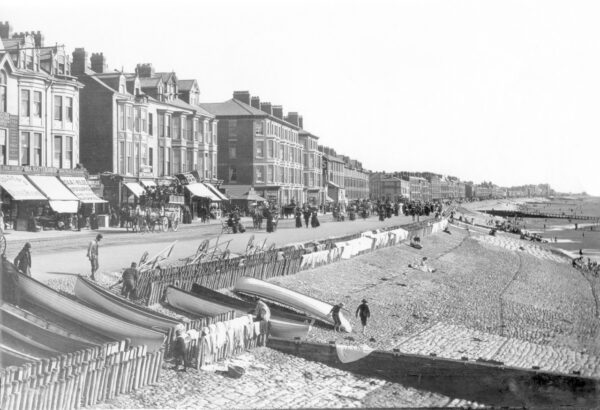
Looking south from the South Pier, later renamed Central Pier in 1893
Some of the business premises include, Isaac Wilde – Photographer, Holden’s Dining Rooms, J. Holroyd – Tricycle Hire and Rochester – Baby Photographer
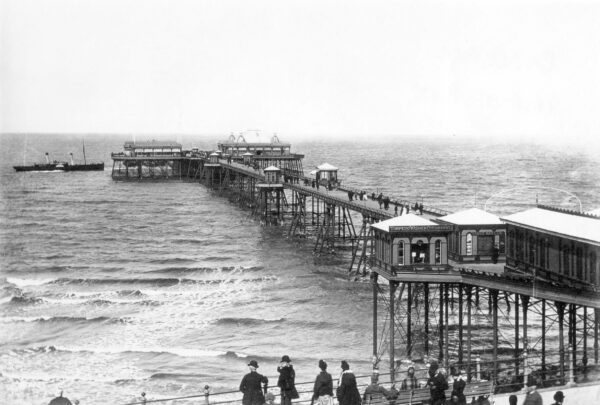
North Pier – 1890
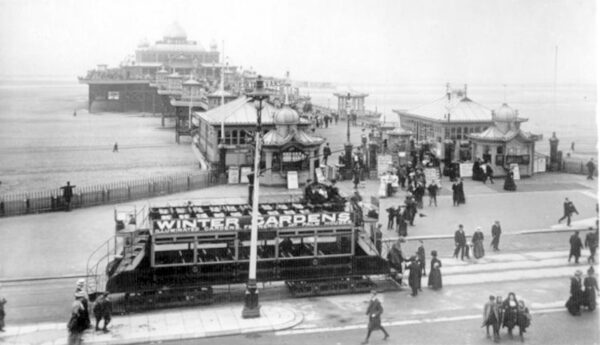
Victoria (South) Pier 1894

